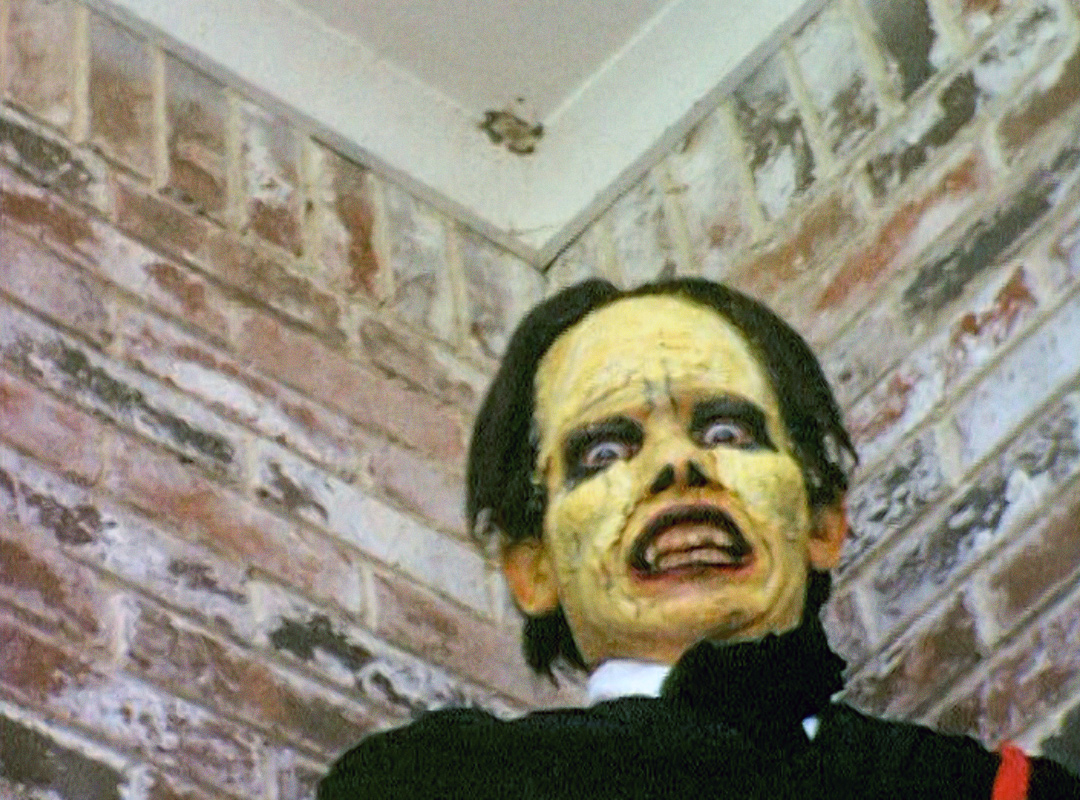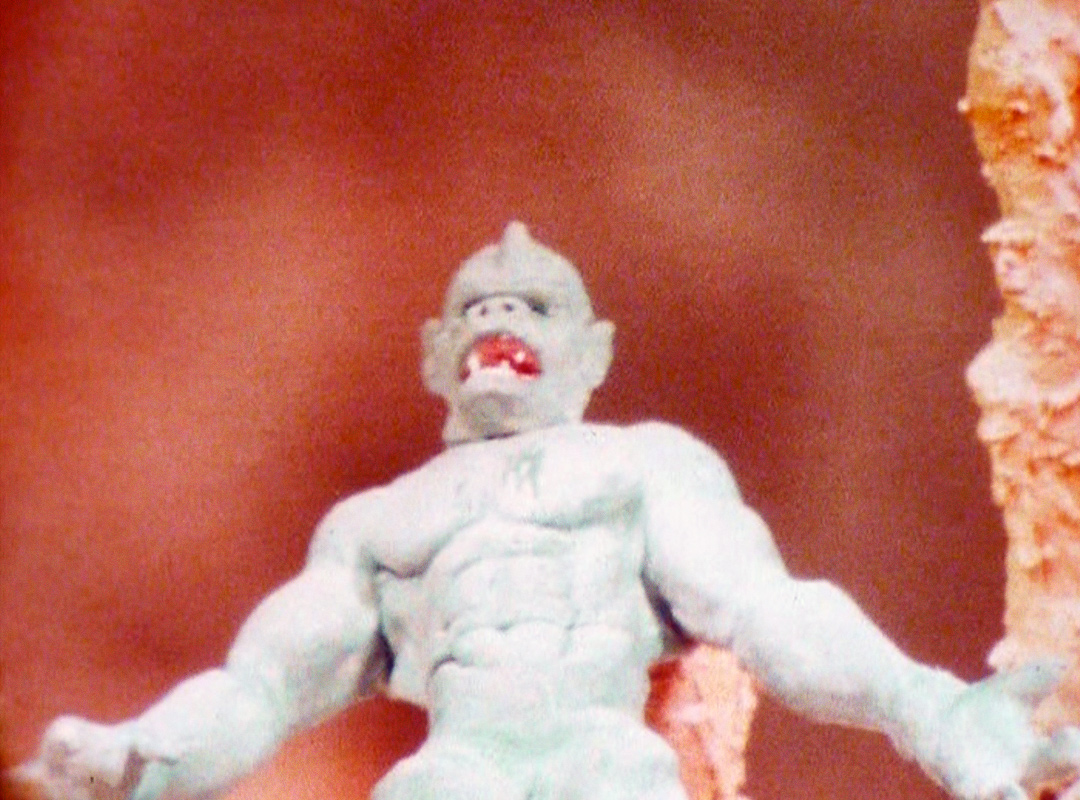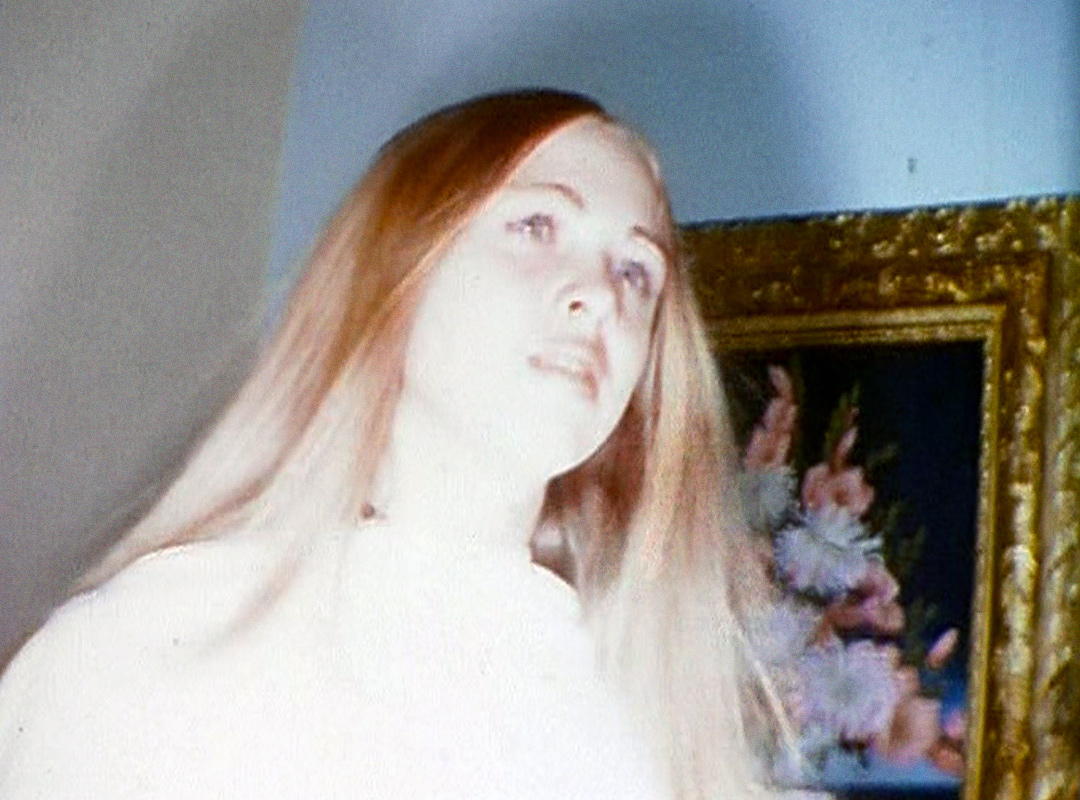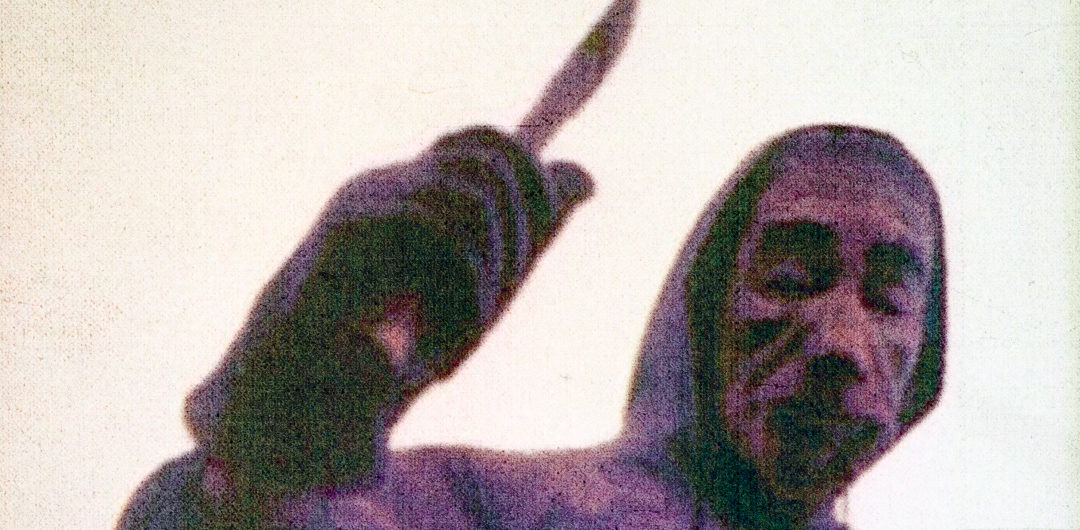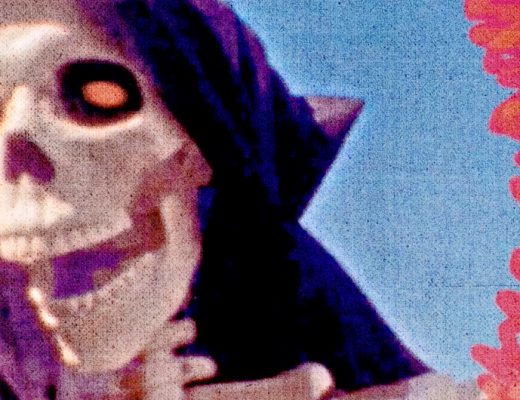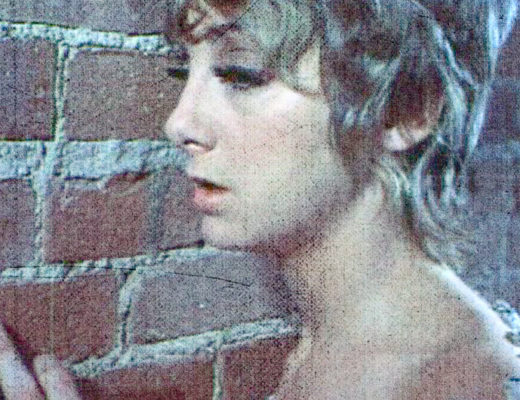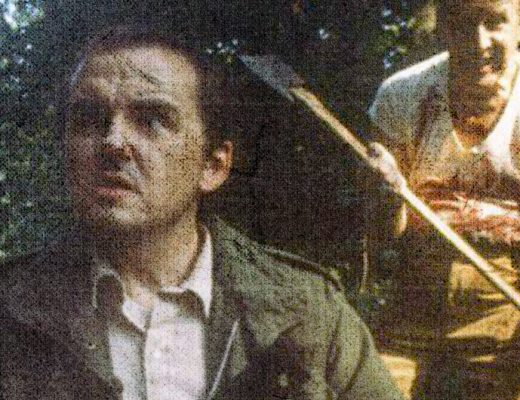Brian Wilson’s dreamy voice emotes as The Beach Boys’ “In My Room” crackles through a transistor radio. A mirror reflects a young kid as he creates a mustache with shoe polish. In the kitchen, his sister wears a vampire cape that’s lined with purple rayon. Mom snips some locks off of the family’s Golden Retriever so that they can be glued to someone’s face. Dad pulls up in a Ford Anglia, fresh from the corner drugstore with a handful of 8mm film reels. Why all the commotion? It’s a big day: Dracula Meets the Wolf Man is about to begin (and wrap) principal photography. Lon Chaney, Jr. is most definitely not in the building.
Monster Kid Home Movies is a DVD collection of monster-themed Super 8 films, ranging in date from 1952 to 1982 and shot by “monster kids” in the prime of their spooky discoveries. For most people, a release of this nature taps into warm nostalgia, expanding the memories of double feature matinees, stinky model paint, and dimestore vamp fangs. That’s for most people.
But not everybody grew up reading Famous Monsters. Most fingers never touched an Aurora monster model. Universal monsters may have bowed down to Night Of The Living Dead and Halloween during formative years. So why is this the most universally engaging DVD release of 2005? Monster Kid Home Movies presents the unhinged creativity of kids and teenagers as they reinterpret their favorite genre movies for a singular purpose: spontaneous joy on a sunny Saturday afternoon. In doing so, viewers of the 21st century gain an insight into the effects of vintage pop culture on the youth of America . . . on actual film, even! Monster lover or not, it’s impossible not to smile as the flicker of past decades unfolds before our eyes.
Collecting thirty films from all over the U.S., running nearly two and a half hours, and icing things off with filmmaker commentaries (!), Monster Kid Home Movies is the be-all and end-all of amateur Super 8 film treasures. The films feature the talents of everyone from genre historian Tom Weaver to Disney animator/trash film actor Frank Dietz (Rock ‘N’ Roll Nightmare), from 1970s Marvel Comics artist Kerry Gammill to everyday fans like Mike High.
Like the chance discovery of old Super 8 reels in an attic, the magic of this release lies in its surprises. You’ll marvel as the title ghoul in Dan Schies’s Mr. Hyde digs up havoc in an actual school hallway; gasp as a rubber-masked zombie performs insane stunts in Jon and Tom Weaver’s Up For Grabs; get hypnotized by the “go get ‘em” enthusiasm behind Bruce Tinkel’s The Blue Death Strikes. These movies exists today as a relaxing time capsule, always fascinating and oblivious to the ravages of analysis. The compiling and release of Monster Kid Home Movies is a major accomplishment, obviously created as a true labor of love. So how does a project of this magnitude get off the ground? Meet Joe Busam.
A traditional animator for twenty-five years, Cincinnati native Busam was entranced by the horror craze of the early 60s. The key ingredient to the success of Monster Kid Home Movies lies in Joe — he not only contributed The Raven, a surreal short from his high school years, but compiled and produced the entire project from start to finish. Here’s how it happened.
Bleeding Skull: What inspired you to make this happen?
Joe Busam: Back about 6 years ago, Richard Olson brought his original films to Monster Bash to show us. We were knocked by them. We just couldn’t get over what an effect they had on us. I think we all saw a bit of ourselves in them. The following year, several others had dug out their home movies and brought them for show-n-tell. We thought that it would be good to collect these things on to a tape or DVD, not only to share among our group but more importantly to preserve them on something other than the fragile one of a kind prints they currently existed on. It took a few years but we started getting serious about it. It struck me that the post production facility I worked for had everything we needed (film to tape transfer/color correction/graphics/editing/DVD authoring) to put this thing together. It was then that I put a proposal together.
BS: When did you start working on it?
JB: The official production began early in 2004. Working with David Phillippi, one of our sales reps, we put a budget together and showed the powers that be some of the films. Initially some of them couldn’t comprehend what the appeal was. But after we showed them some of the films, they too came under their spell.
BS: How were the original film elements assembled and transferred for the DVD release? Any particular hardships or bumps along the way?
JB: Once we had the films in house, they were cleaned, inspected and we made repairs as necessary. We then transferred them on a Rank telecine and made adjustments and improvements through a DiVinci color correction system. This allowed us to color correct, sharpen the image and adjust for extremes in exposures that you often see in home movies. The biggest bump was getting audio commentaries from everyone. As everyone was responsible for recording their own commentaries, some of them didn’t have access to decent recording equipment. I assumed everyone would have access to at least a cassette recorder. This turned out not to be the case and so we struggled to find ways for them to get it recorded. Someone came up with the idea of using a camcorder which actually worked better than a standard audio cassette deck as it kept the audio from sliding. The technical quality varies on the commentaries but so do the visuals in the films. A good match, I think.
BS: Aside from your contribution of The Raven, do you have experience in other aspects of filmmaking?
JB: Actually, I’ve been a traditional animator for over 25 years. Most of the work I’ve done has been in the field of commercials and industrial films. I also have done a few stop motion pieces for different clients over the years. CGI has impacted a lot of the work I’ve been doing, but I still do some animation. Most of my time is now spent doing 2D graphics, illustrations and now film to tape transfer and color correction.
BS: How did you pool together the resources to get the disc released?
JB: While I was labeled producer, I had numerous people working with me here at PPS. David Phillippi got budgets together, helped pitch the ideas to upper management, made phone calls, booked edit sessions, sought out PD music cues we could use, etc. Eric Hampton was a tower of strength, not only as the Avid editor but he took on the task of editing the music cues to accompany the silent films. Something I never could have done, at least not with his level of professionalism and speed. Chris Yelton and Preston Price assembled the graphics I designed and brought them to life in After Effects and finally Jim Shupert was responsible for the DVD authoring. MKHM turned out to be his biggest challenge to date. With so much content and multiple audio tracks we were venturing into unknown territory. I think we all learned a great deal on this project.
Order Monster Kid Home Movies today!
